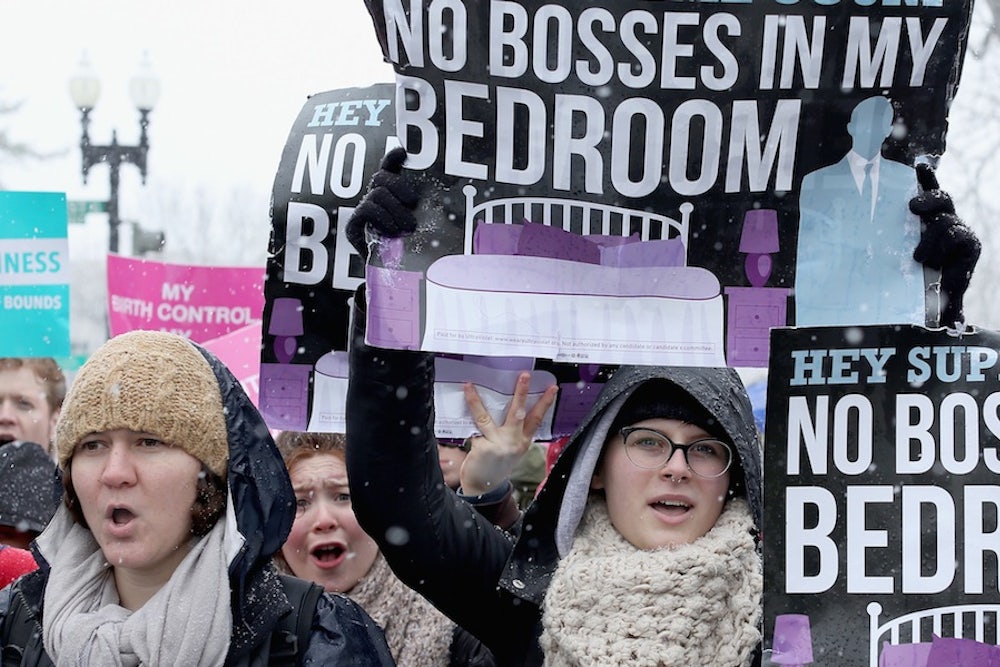By ruling that family-owned businesses can deny contraceptive coverage to their employees, the Supreme Court handed a victory to a handful of businesses whose owners equate contraception with abortion. But the conservative justices may have dealt a blow to Republican political chances in 2014 and even in 2016.
Polls show, of course, overwhelming public support for contraception, even among Catholics. A Gallup poll in May 2012 found that 89 percent of all respondents and 82 percent of Catholics believed that contraception was “morally acceptable.” If Democrats can paint their Republican opponents as supporters of the Roberts Court and its decisions, they could help their cause significantly, especially among women who might otherwise vote for Republicans or not vote at all.
One can look at the effect an earlier court decision regarding women’s rights had on Congressional and gubernatorial elections. In July 1989, the court handed down Webster v. Reproductive Health Services upholding Missouri’s right to restrict the use of state funds and employees in performing, funding, or even counseling on abortions. It was the first court decision restricting the rights bestowed under Roe v. Wade.
The nation, of course, was divided on the issue of abortion. How the issue played politically depended on which side of the debate saw itself under attack, and in this case the Webster decision mobilized pro-choice supporters. The right to abortion became a hot issue in the 1990 elections, and in the final results, abortion-rights supporters came out ahead. There were several telltale races. In Florida, Democrat Lawton Chiles defeated incumbent Republican Governor Bob Martinez, who, in the wake of Webster, had championed restrictive laws for Florida.
In the Texas governor’s race, Democrat Ann Richards defeated the Republican candidate Clayton Williams. According to polls, Richards, who made opposition to Webster a centerpiece of her campaign, garnered over 60 percent of the women’s vote, including 25 percent of Republican women. In the final tally, abortion-rights supporters, running against or replacing anti-abortion candidates, secured a net gain of eight seats in the House of Representatives, two Senate seats, and four statehouses.
What was also striking was the overall size of the gender gap. According to the National Election Studies survey, there was no gender gap between male and female supporters of Democratic congressional candidates in 1988. In 1990, gender gap was ten percentage points—the highest ever. All in all, 69 percent of women voters backed Democratic congressional candidates that year. Of course, there were other issues than Webster that were moving votes, but there is no doubt that the court ruling played an important role that year.
Fast forward to 2014. If Webster improved Democratic chances in 1990, the court’s decision in Burwell v. Hobby Lobby could prove a boon to Democrats. Abortion rights remain controversial but contraception is not, and the opposition to contraception raises hackles among most voters, but especially among women. If Democrats, who had seemed destined for defeat in November, can tie the ruling around the necks of their Republican opponents, they could do surprisingly well in November.
Correction: The story originally identified Clayton Williams as an incumbent in Texas when he was, in fact, a Republican candidate challenging Richards for an open seat.
